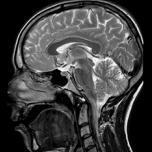-
Content count
737 -
Joined
-
Last visited
About undeather
-
Rank
- - -
- Birthday 06/06/1993
Personal Information
-
Location
Austria
-
Gender
Male
Recent Profile Visitors
3,937 profile views
-
I really tried to watch it - but i just couldn't make it through...
-
HDL-C and especially it's propensity to adapt in context of lifestyle-changes are genetically determined. You might improve some points by adding more exercise, but If I had to bet - I would propably say it would stay rougle the same. The most dramatic changes in lipid markers are usually seen in overweight individuals who reduce bodyfat and build muscle. That said, don't worry to much about it - having a low LDL-C is much more important! And you are doing fine in that regard. Also, newer reserach seems to suggest that HDL-function seems to be as/if not more important than HDL-quantity.
-
This podcast provides a profound exploration of the dichotomy between Eastern and Western medical paradigms, offering a nuanced examination of their respective merits. It skillfully navigates the intricate nuances of each approach, illuminating their strengths while remaining open to critique and discourse. It stands as a testament to the richness of the dialogue surrounding healthcare practices, inviting listeners to delve deeper into the complexities of medical philosophy and practice.
-
No, psychopathy is not 6 times more prevalent in doctors than in the general public. That's an outrageous claim and frankly, not true. Health care professionals score significantly lower on narcissism, Machiavellianism and psychopathy. Many people report difficult experiences with healthcares workers - but let's not throw the baby out with the bathwater. Most doctors are overworked, stressed out, mentally & physically drained - some of them are assholes and few actual psychopaths. That said, all in all - I would argue that most people have mostly positive encounters with thei doctors. I would say that 90%+ of my patient interactions are extremely positive and I see similar patterns in colleagues.
-
Herbs and healthy foods will most likely make you feel significantly better to begin with. One must also not underestimate the effect of placebo like dynamics in such cases. I have seen this way too many times in some of my patients. Pateint X with symtpoms Y tries food/habit/supplement Z and feels a direct improvement in their health. Only to later find out the real cause of their ailment being something much more ordinary. Now, important disclaimer - what you are doign is great! If you feel an improvement, more power to you! - It's great that you are in touch with your subjective wellbeing to that extent. That said, we would love you to consider a more broader spectrum of potential causes. As Michael said, a lot of naturopaths are caught in a very reductionistic and short-sighted framework.
-
Not only are your thyroid-hormones in the normal range. There is a rather unconventional "optimal range" used by some endocrinologist - and you are bang in it. (If I have not misconverted the units) I highly doubt your symptoms stem from your thyroid. Michael gave you some pretty decent input. I would take that to the heart.
-
Dont forget the combine mewing with regular jaw-muscle exercises to achieve max bicycle seat aesthetics.
-
It really depends on the area of research. The harder the science, the easier it gets to design adequately powered research. In medicine, I would go way higher than 50%. I would argue that at least 80-90% of all studies published suffer from significant methodological flaws. That said, it's important to mention that there is still great research to lean on for scientific progress. One just has to weigh it properly.
-
I can't imagine myself working on that thing and actually being productive
-
If you are not a skeptical person in todays world, you are credolous fool. The right path is being skeptical without becomming a skeptic.
-
5 times a day
-
David Sinclair, Harvard professor, longevity reseacher & author - best known for his appearances on Joe Rogan and several other podcasts - seems to be one of the new big snakeoil salesmen in the medical industry. I did not expect this kind of bullshitting from someone with his credentials, but there you have it. Absolutely shocking:
-
Indeed, research as early as 2017 has shown that a ketogenic diet can impair thyroid function in some individuals. It's well-documented that the conversion of thyroxine (T4) to triiodothyronine (T3) diminishes during fasting. However, experiencing significant effects after just one week on a low-carb diet would be unusual. Have you had your thyroid function checked recently? The issues you've mentioned—being skinny-fat, experiencing mood fluctuations, focus difficulties, and challenges in building muscle—could all be indicators of undiagnosed hypothyroidism. Regarding the "big ball" you feel in your stomach, it's unlikely to be your liver; fatty liver disease typically doesn't present as a palpable condition. It's possible that this sensation could also be related to low thyroid function; bloating is a common symptom and might manifest as a "ball-like" structure in a specific area of the stomach. My first advice would be to get your blood-levels evaluated by your GP. Also, an ultrasound of your internal organs would be indicated in such case (just be sure your "big ball" isn't something serious) Second, I would really push back against ketogenic diets in general. For every success story you read online, there is at least one other person who progressively gets worse on a low carb diet. You have started a ketogenic diet and now notice negative patterns in your body - so I would argue it's maybe not the right choice for you. What hinders you from going on a healthy, omnivorous diet? You need to really take all those healh-influecners (like Mark Sisson) and fad-diets with a grain of salt. They will promise health, wealth and beauty - but so does every other diet-scheme nowadays (carnivore, vegan, paleo...). And if you actually check what kind of evidence they are basing their claims on - it becomes laughable. Carbs are not your enemy - that's a conditioned believe. Most people who follow a healthy omnivorous diet consisting of enough protein, good carbs & healthy fats are doing more than fine from a health perspective.
-
Binding of proteoglycans induces structural changes in LDL impacting both the configuration of apoB100 and the lipid composition. Hence, the binding of LDL to proteoglycans makes the LDL more susceptible to oxidation and aggregation, which promotes foam cell formation and a proinflammatory response, and the process is self-perpetuating. Oxidized LDL can induce further production of proteoglycans by vascular smooth muscle cells, retaining more LDL in the arterial wall.The causal relationship between ApoB and cardiovascular disease progression is one of the most consistent in all of modern medicine. What you measure in your serum as "oxLDL" is NOT the same as the particle that goes through the oxidation process in the subendothelial space. A fully oxidized lipoprotein particle, which then becomes a ligand for the scavenger receptor of the macrophage, shows a high modifcation-state in their phospholipids and the apoB-component. This process doesn't occur directly in your bloodstream, primarily because of the abundance of antioxidants present there. However, minimally oxidized LDL particles in your serum do show a higher propensity to enter the arterial wall and appear to further promote atherosclerotic activities, such as reduced capability for reverse transport and increased production of reactive oxygen species (ROS). Yet, it's important to note that most studies to date haven't definitively pinpointed the direct cause. Ultimately, the crucial factor is total ApoB, and in my view, mendelian randomization studies illustrate this most effectively. Even with no oxidized LDL (oxLDL) in your serum, having a high ApoB count can still lead to heart disease. Numerous studies indicate that having a higher antioxidative capacity does not guard against atherosclerosis. Intriguingly, exceeding a certain threshold of antioxidative potential might even exacerbate the condition. While I support efforts to reduce serum oxLDL, given the strong mechanistic rationale behind it, it's crucial we don't selectively interpret data. Instead, we should consider the broad spectrum of research findings to guide our understanding and actions. What we definitely can be sure of is that reducing ApoB burden, through lifestyle interventions and sometomes drugs, directly reduces our cardiovascular disease risk.
-
Yes, ChatGPT It's an amazing time saver!






.thumb.gif.e1f2bc255c1ad77f643681d5b3925020.gif)








